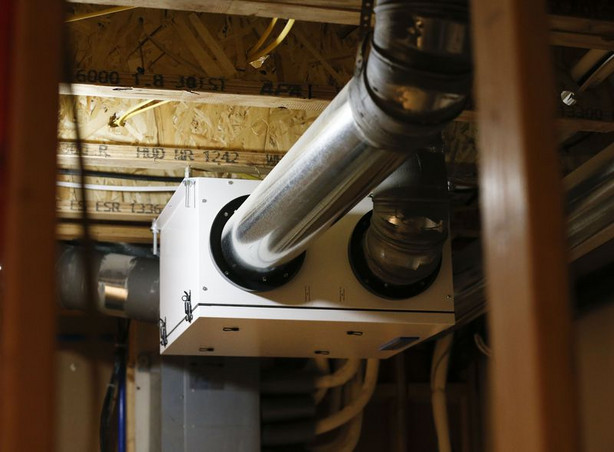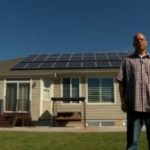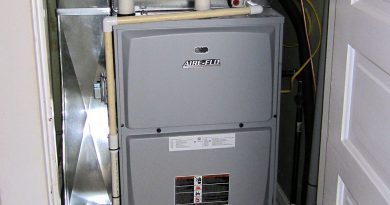Want to live in a net-zero energy home? Here’s the Utah house that bested designs from around the world – KSL.com
Energy Disrupter
SALT LAKE CITY — An “off-the-shelf” Utah project found innovative and affordable ways to embrace net-zero emissions and in doing so, outshined multiple countries in an international competition.
This is why it matters: This Ogden home produces more energy than it consumes and is what many advocates believe to be the wave of the future when it comes to combatting climate change.
Net-zero is a trend that is becoming increasingly popular as communities look to cut carbon emissions. Net-zero energy simply means that a home or building produces as much energy as it consumes.
A group of 50 university students led by a Weber State University faculty member demonstrated they were best in innovative engineering and architecture by building a net-zero home ranked No. 1 for its energy performance.
In doing so, they bested eight other collegiate teams — from the Netherlands, South Africa and Chile — to take the top prize in that category, as well as second place in presentation in the International Solar Decathlon.
“Energy performance is what we concentrated on the most, so we were excitedly shocked but proud to win,” said Jeremy Farner, a building design and construction professor at WSU and director of the effort.
The University of Colorado at Boulder took first place overall.

pictured in Ogden on Wednesday, April 27, 2021. The home took first
place internationally for its energy performance in a fierce
competition, beating out eight other teams. (Photo: Laura Seitz, Deseret News)
A report put out a couple of years ago estimated there were more than 5,000 net-zero homes in the country and another 7,000 multifamily units. Those numbers were estimates released even before new building codes took effect in California that require nearly every new home constructed to include solar panels and high energy-efficiency design.
Another organization, the Energy & Environment Building Alliance, documented the inventory of net-zero building units in both the United States and Canada at 27,965 in 2019, and notes where each state stands. Utah was not among the top 20 U.S. states for its units, — but it did not rank among the poorest performing — logging anywhere from 100 to 999.
In Ogden, the home at Quincy Avenue in the central city area was designed to incorporate the “true cost of ownership” by cutting energy costs to operate the home at just $100 a year.
And it is not a small home.
The 2,540-square-foot house features six bedrooms, two bathrooms and two family rooms. It includes portable battery backup technology to power the home’s critical functions for up to 72 hours if the electrical grid were to go down. Its solar array generates enough energy to offset the energy usage of the home annually and can provide electricity to charge an electric vehicle to travel 20 miles per day.
Each feature was selected for its availability to homebuilders.

the Weber State University-driven net-zero home in Ogden on
Wednesday, April 27, 2021. The system continuously exchanges stale
air with fresh outside air and recovers 95% of the energy invested
in that air. The home took first place internationally for its
energy performance in a fierce competition, beating out eight other
teams. (Photo: Laura Seitz, Deseret News)
“We didn’t do anything in this home that wasn’t off the shelf,” Farner said. “We wanted to prove to the masses that you can do net-zero design, but you just have do it smart and design a system that will have a return on its investment.”
The top place win in energy performance was particularly noteworthy for project participants because the judging simply looked at the raw numbers.
“For us the competition was about the data, and the energy performance category data showed we had the most energy-efficient home,” said Janae Thomas, student project manager. “By understanding and utilizing smart building principles, we can ensure a healthy quality of life for our community.”
That is not to say there were not challenges along the way.
The lot was obtained through an agreement with the city as part of its efforts to revitalize neighborhoods, especially in Ogden’s historic districts.
An aging fourplex previously occupied the lot, and during excavation, Farner said, the team discovered piles upon piles of bricks that had been left behind after the demolition.
Farner said it cost $70,000 to haul away the refuse.
“It pushed us over what we would consider affordable.”
Still, the university received 13 full-price offers of $345,000 and the winning homeowners were selected via a drawing.
Mark Haslam, his wife, Melissa, and their son, Maverick, now occupy the home, moving in last November.
“It’s been wonderful,” she said. “It’s been interesting to see how much heat the home retained over the winter, and we’re looking forward to seeing in the summer how cool it will stay.”
Melissa Haslam said the couple had been looking for a home to purchase, heard about the Weber State project and decided to enter the drawing.

home in Ogden on Wednesday, April 27, 2021. High-efficiency
appliances were installed in the all-electric, net-zero energy
home. The Weber State University-driven project took first place
internationally for its energy performance in a fierce competition,
beating out eight other teams. (Photo: Laura Seitz, Deseret News)
“It has worked out perfectly for us. We have never won anything in our lives, but we were able to get this home, which has been a huge investment.”
She added that other potential homeowners should check out the net-zero home market because the savings realized over time will pay off.
With this project completed, Farner is looking for more to complete.
The students who worked on the Quincy home have all since graduated and are working in the industry. But he will be working with a new group of students, partnering with the Weber Housing Authority, to design and build net-zero homes for low-income families.
Proceeds from the sale of the Quincy home were deposited in a newly established Student Construction Capital Revolving Fund to pursue these subsequent projects with an eye toward affordability.
“We really want to address the affordability piece by lowering the cost of homeownership. If families know their energy bills are going to be around $10 a month, then they can afford a slightly larger home.”
After that, Farner wants to work with a subsequent group of students to embark on the retrofitting of an existing home, something he anticipates will generate interest from a lot of homeowners looking to cut energy costs and be more efficient.
“Absolutely, I think these homes are the wave of the future,” he said.
More stories you may be interested in
Original Source: https://www.ksl.com/article/50158523/want-to-live-in-a-net-zero-energy-home-heres-the-utah-house-that-bested-designs-from-around-the-world
















